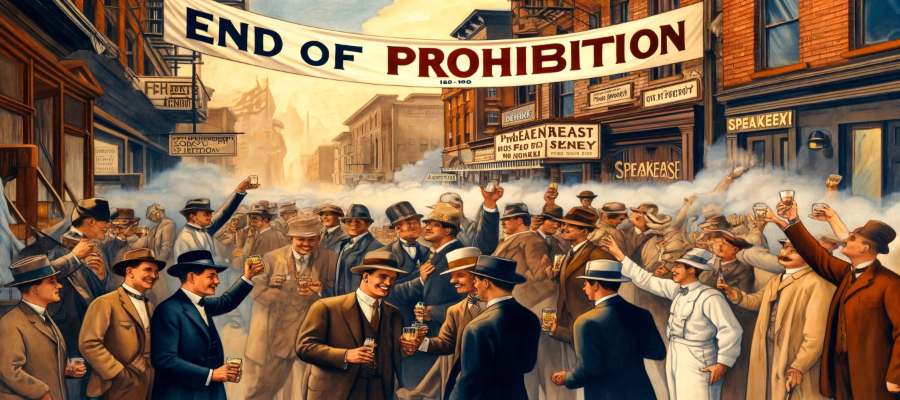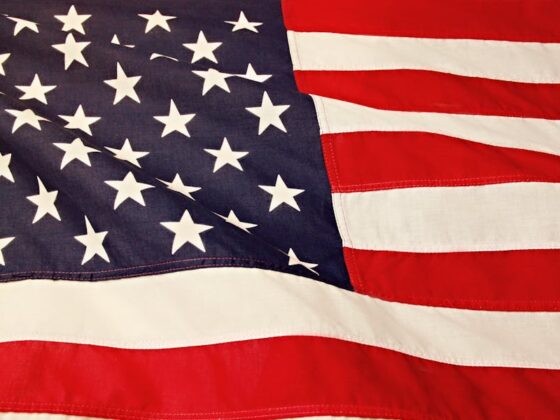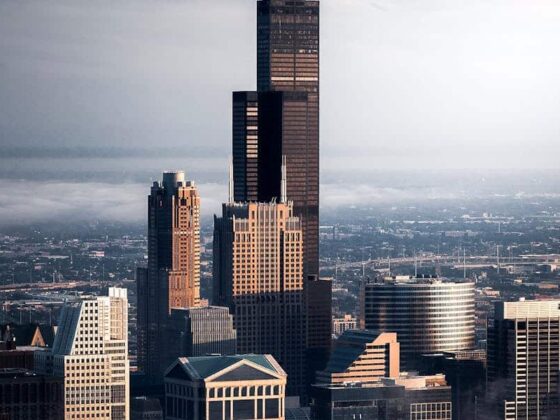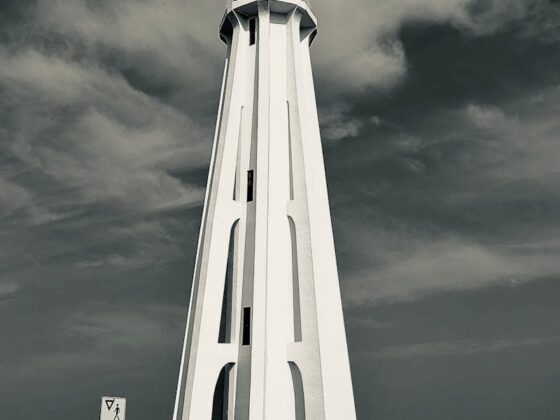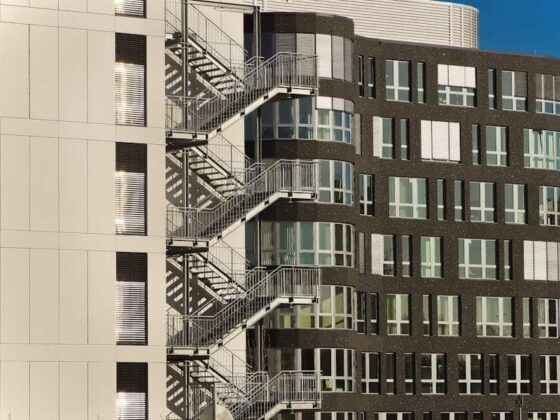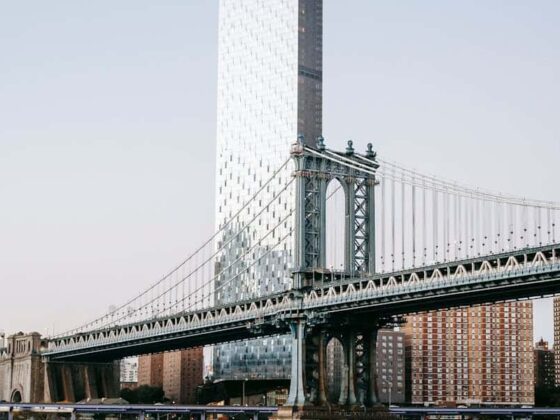Prohibition, the nationwide constitutional ban on the production, importation, transportation, and sale of alcoholic beverages from 1920 to 1933, stands as one of the most intriguing periods in American history. Initially implemented to reduce crime, corruption, and social issues associated with alcohol, Prohibition ultimately led to widespread unintended consequences. Over time, public opinion shifted, and the nation reconsidered its stance. This article delves into why America changed its mind about Prohibition, examining the socio-economic and political factors that contributed to its repeal.
Why Did America Change Its Mind About Prohibition?
Why did America change its mind about Prohibition? America changed its mind about Prohibition due to a combination of factors including the rise in organized crime, the economic pressures of the Great Depression, and the realization that Prohibition was ineffective in reducing alcohol consumption. The unintended negative consequences led to a shift in public opinion, ultimately resulting in the repeal of Prohibition in 1933.
The Initial Support for Prohibition
Prohibition initially received support for various reasons. Many believed it would reduce crime and corruption, improve health and hygiene, and strengthen families by eliminating the destructive influence of alcohol. Additionally, the temperance movement, backed by religious groups and social reformers, played a significant role in advocating for Prohibition. They argued that alcohol was the root cause of many societal problems, and its ban would lead to a healthier, more moral society.
Prohibition’s Early Promises and Challenges
During its early years, Prohibition seemed to fulfill some of its promises. Alcohol consumption decreased, and some communities reported a decline in alcohol-related crimes. Public health saw a brief improvement, with fewer cases of alcohol-related illnesses. The economy initially benefited from the reallocation of resources previously used in the alcohol industry. However, enforcing Prohibition across the vast nation proved challenging. Many Americans continued to consume alcohol, turning to illegal means such as speakeasies and homemade brews. This non-compliance highlighted the growing resistance to Prohibition and set the stage for its eventual downfall.
How Did Prohibition Lead to the Rise of Organized Crime?
The Emergence of Bootlegging Prohibition inadvertently led to the rise of organized crime as criminal organizations capitalized on the demand for illegal alcohol. The black market for alcohol flourished, with figures like Al Capone becoming notorious for their involvement in bootlegging operations. The increase in violent crime and corruption undermined law enforcement efforts and exposed the flaws in Prohibition. The surge in organized crime highlighted the ineffectiveness of the ban and contributed to the growing disillusionment with Prohibition.
The Role of Speakeasies
The proliferation of speakeasies, or illegal drinking establishments, further exemplified the failure of Prohibition. These underground bars became popular, attracting patrons from all walks of life and fostering a culture of defiance against the law. The widespread existence of speakeasies demonstrated the public’s willingness to circumvent Prohibition, undermining its objectives and revealing its impracticality.
Corruption and Law Enforcement
Prohibition also led to significant corruption within law enforcement agencies. Bribes and payoffs became commonplace as officers turned a blind eye to illegal activities. This corruption eroded public trust in the authorities and highlighted the challenges of enforcing such a sweeping ban. The inability to effectively police Prohibition contributed to the growing sentiment that the policy was untenable.
Impact on Public Opinion
The rise in organized crime and the visible corruption among law enforcement significantly impacted public opinion. As the negative consequences of Prohibition became more apparent, the initial support began to wane. People started to question the efficacy of the policy and its impact on society. The increasing violence and lawlessness made it clear that Prohibition was not delivering the promised benefits, leading to a shift in public sentiment.
What Economic Pressures Contributed to the Shift in Public Opinion?
The Great Depression played a crucial role in changing public opinion about Prohibition. The economic crisis highlighted the need for increased tax revenue and job creation. Legalizing alcohol promised substantial financial benefits, including new jobs in brewing and distilling industries and significant tax revenues from alcohol sales. These economic pressures, combined with the financial strain of the Great Depression, made the repeal of Prohibition an attractive solution for revitalizing the economy.
Financial Strain on the Government
During the Great Depression, the federal government faced severe financial strain. The loss of tax revenue from legal alcohol sales exacerbated the economic challenges. Repealing Prohibition offered a way to boost government income through taxes on alcohol, providing much-needed funds for public services and economic recovery programs.
Job Creation and Economic Stimulus
The legalization of alcohol also promised job creation in the brewing, distilling, and hospitality industries. With unemployment rates soaring, the potential for new jobs was a compelling argument for repeal. The prospect of revitalizing these sectors of the economy provided a strong incentive to reconsider the ban on alcohol.
Influence of Business Interests
Business interests, particularly those in the brewing and distilling industries, played a significant role in advocating for the repeal of Prohibition. These industries had been devastated by the ban and saw legalization as a path to recovery. Their lobbying efforts and financial contributions to political campaigns helped shift the political landscape in favor of repeal.
Public Support for Repeal
The economic arguments for repeal resonated with the public, who were facing financial hardships of their own. The promise of job creation and economic stimulation through the legalization of alcohol garnered widespread support. As the economic benefits of repeal became clearer, public opinion increasingly favored ending Prohibition.
When Did Public Opinion Start to Shift?
Public opinion began to shift in the late 1920s and early 1930s as the negative consequences of Prohibition became more evident. High-profile crimes, widespread corruption, and the economic challenges of the Great Depression led many to question the efficacy of the ban. Advocacy groups, such as the Association Against the Prohibition Amendment, gained momentum, and political leaders started to voice their opposition. The 1932 election of Franklin D. Roosevelt, who campaigned for the repeal of Prohibition, marked a significant turning point in the national attitude toward the policy.
Early Signs of Discontent
By the late 1920s, the failures of Prohibition were becoming increasingly apparent. The rise in organized crime, public defiance, and enforcement difficulties highlighted the policy’s shortcomings. Reports of corruption among law enforcement officials further fueled public disillusionment.
Advocacy and Reform Movements
Advocacy groups like the Association Against the Prohibition Amendment played a crucial role in shifting public opinion. These groups highlighted the negative impacts of Prohibition and advocated for its repeal. Their efforts to educate the public and mobilize support were instrumental in changing the national discourse on Prohibition.
Political Shifts
The political landscape also began to shift as more leaders spoke out against Prohibition. The economic crisis of the Great Depression intensified calls for repeal, with politicians recognizing the potential financial benefits. Franklin D. Roosevelt’s 1932 presidential campaign included a platform for ending Prohibition, signaling a significant change in political attitudes.
The Role of the Media
The media played a significant role in shaping public opinion during this period. Newspapers and radio programs increasingly covered the failures of Prohibition, highlighting the rise in crime and corruption. Media coverage helped to inform the public and build support for repeal.
Where Did Prohibition Fail to Achieve Its Goals?
Prohibition failed to achieve its primary goals of reducing crime, improving public health, and enhancing moral behavior. Instead, it led to increased organized crime, corruption, and widespread illegal alcohol production and consumption. The intended health benefits were undermined by the consumption of dangerous, unregulated alcohol. Additionally, the moral and social goals were not met as speakeasies and illegal drinking establishments became widespread. The failure to achieve these objectives contributed to the growing dissatisfaction with Prohibition and the eventual decision to repeal it.
Rise in Organized Crime
One of the most significant failures of Prohibition was the rise in organized crime. Criminal organizations thrived on the illegal alcohol trade, leading to a surge in violent crime and corruption. The black market for alcohol became a major source of income for these groups, exacerbating the very issues Prohibition aimed to resolve.
Health and Safety Concerns
Prohibition also failed to deliver on its promise of improved public health. Instead of reducing alcohol consumption, it led to the production and consumption of dangerous, unregulated alcohol. Cases of alcohol poisoning and other health issues related to illicit alcohol became common, undermining the public health goals of Prohibition.
Social and Moral Outcomes
The social and moral outcomes of Prohibition were equally disappointing. Instead of fostering a more moral society, Prohibition led to widespread defiance of the law. Speakeasies and illegal drinking establishments flourished, promoting a culture of lawbreaking. The intended moral uplift was not realized, and the social fabric was strained by the widespread disregard for Prohibition.
Economic Consequences
Economically, Prohibition had unintended negative consequences. The government lost significant tax revenue from legal alcohol sales, which could have been used to fund public services. The economic benefits of legalizing alcohol became evident, especially during the Great Depression, highlighting the financial cost of maintaining Prohibition.
Conclusion
The repeal of Prohibition in 1933 marked the end of a significant but flawed chapter in American history. The initial support for Prohibition, driven by social reformers and political motivations, gave way to widespread disillusionment as the negative consequences became apparent. The rise of organized crime, economic pressures of the Great Depression, and the overall ineffectiveness of Prohibition led America to change its mind. Understanding the reasons behind this shift offers valuable insights into the complexities of public policy and societal change.
FAQs
What were the main reasons for the shift in public opinion about Prohibition?
The main reasons for the shift included the rise in organized crime, the economic pressures of the Great Depression, and the realization that Prohibition was ineffective in achieving its goals.
How did the Great Depression influence the repeal of Prohibition?
The Great Depression highlighted the need for increased tax revenue and job creation. Legalizing alcohol promised substantial financial benefits, which influenced public opinion and political decisions.
